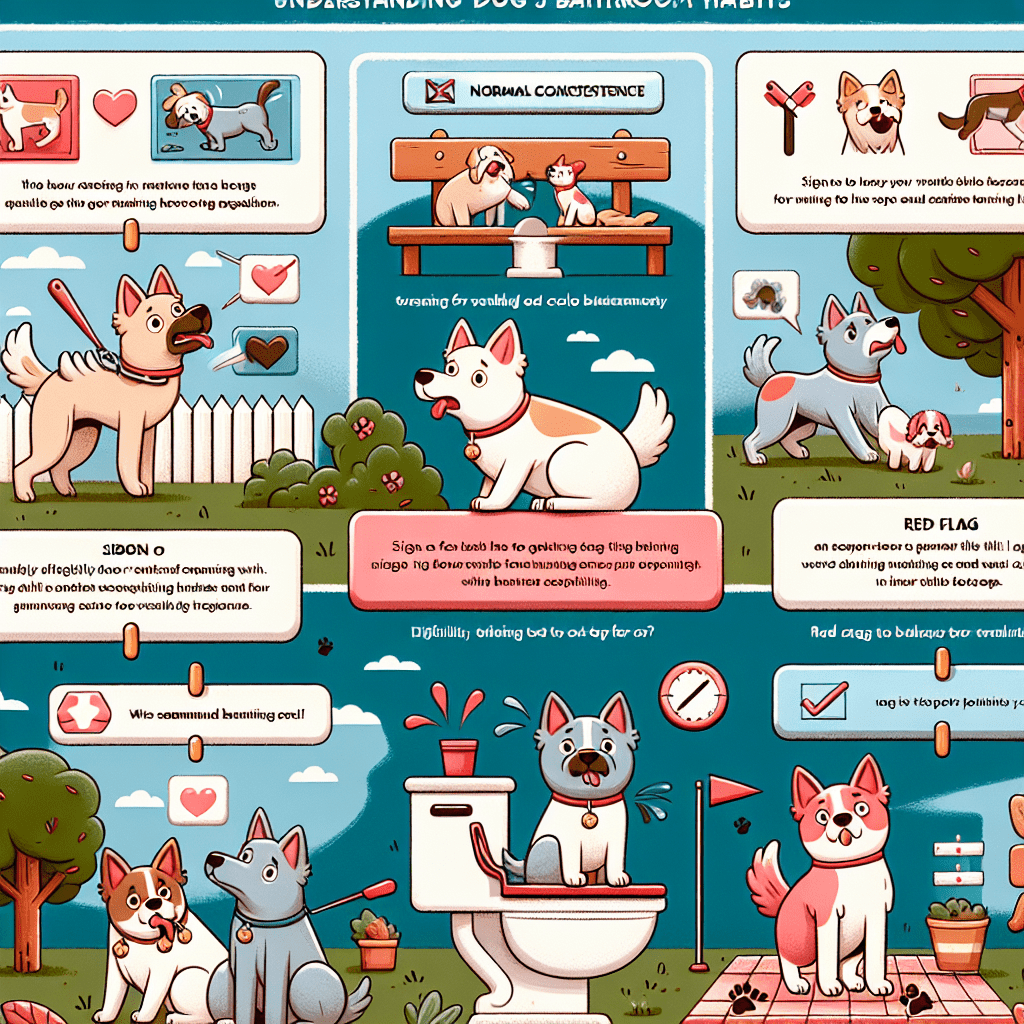

Paw-sitive Insights: What Your Dog’s Toilet Behavior Reveals About Their Health
As a seasoned dog trainer and lover, I often find myself engaged in conversations about canine health. You might be surprised to learn how much we can uncover simply by observing our furry friends’ toilet habits. Yes, potty behaviors are not just about “doing their business”; they are important indicators of a dog’s overall health and well-being. Today, I’m excited to share insights and tips that can help you understand what your dog’s toilet behavior might reveal and how you can take proactive steps to ensure their health remains a priority!
When we talk about your dog’s toilet habits, we’re not just focusing on where they like to relieve themselves; we’re talking about the entire process. The type, consistency, and frequency of their poops can tell you a lot about their diet, hydration, and overall health. Here’s how you can interpret some of these signs:
Keeping tabs on your dog’s toilet habits can help you catch potential health problems early. Dogs can’t speak, but they communicate their needs and issues in various ways. Recognizing abnormalities in these habits can lead to timely veterinary interventions, saving your fur baby from serious health complications. Here are some key reasons why monitoring these behaviors should be a priority:
Every dog owner should be attentive to their dog’s toilet behavior! Whether you’re a first-time puppy parent or a seasoned dog enthusiast, understanding these insights can greatly improve your pet’s quality of life. In particular, this knowledge is crucial for:
So, what can we do if we notice changes in our dog’s toilet behavior? Here are some proactive steps you can take:
Like any aspect of pet care, there are pros and cons. Here’s a quick overview regarding this particular practice:
If you have multiple dogs, you might find it helpful to compare their toilet habits. Each dog is unique, but patterns often emerge that can highlight individual health concerns. For instance:
Remember, every find—like differences in color, frequency, and consistency—can be a valuable clue.
Q: How often should my dog poop?
A: Most adult dogs will poop once to five times a day. That said, every dog is different, and factors like diet and hydration will influence this.
Q: What should I do if my dog’s poop is a different color?
A: Observe for any other symptoms. If the color persists for more than a day, it’s wise to consult your veterinarian.
Q: Can diet change affect my dog’s toilet behavior?
A: Absolutely! Sudden changes in diet can lead to changes in stool consistency and frequency. Aim for gradual transitions.
Q: Is my dog’s urination frequency important too?
A: Yes! Increased or decreased urination can reveal health issues that need addressing.
Q: When should I see a vet?
A: If you notice any significant changes in your dog’s toilet habits, particularly if they are accompanied by other symptoms like lethargy or vomiting, consult a veterinarian promptly.
You know your dog better than anyone else! By staying informed about their toilet behavior, you can achieve lasting health and happiness for your furry friend.
Disclaimer: As an Amazon Associate, I earn from qualifying purchases; I may earn a commission from qualifying purchases as an affiliate. Please note that I only recommend products I believe will provide value to my readers.